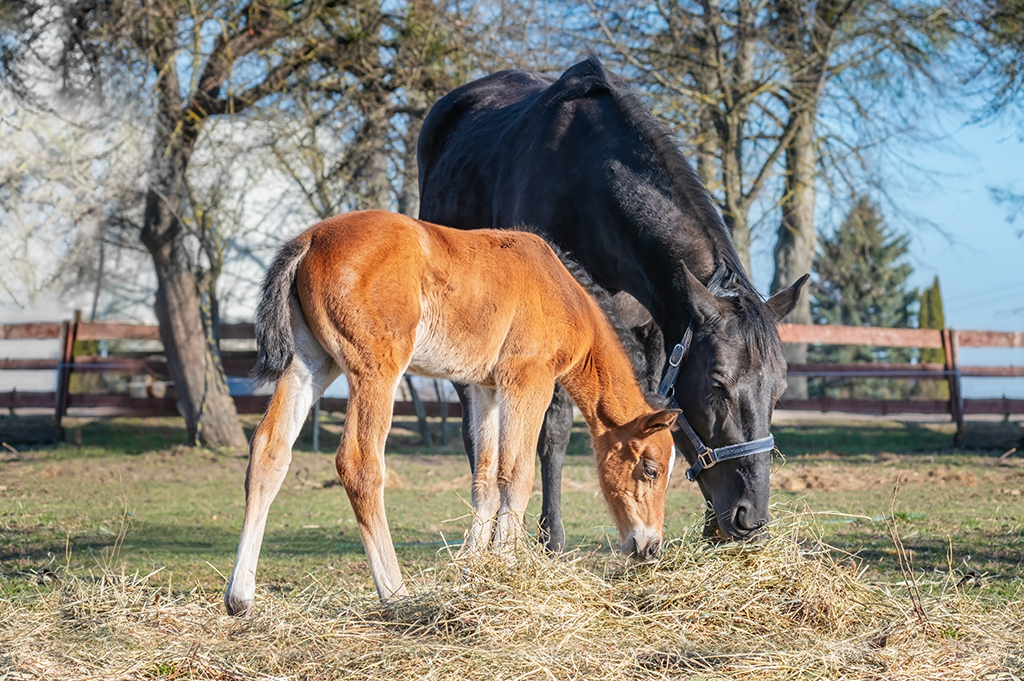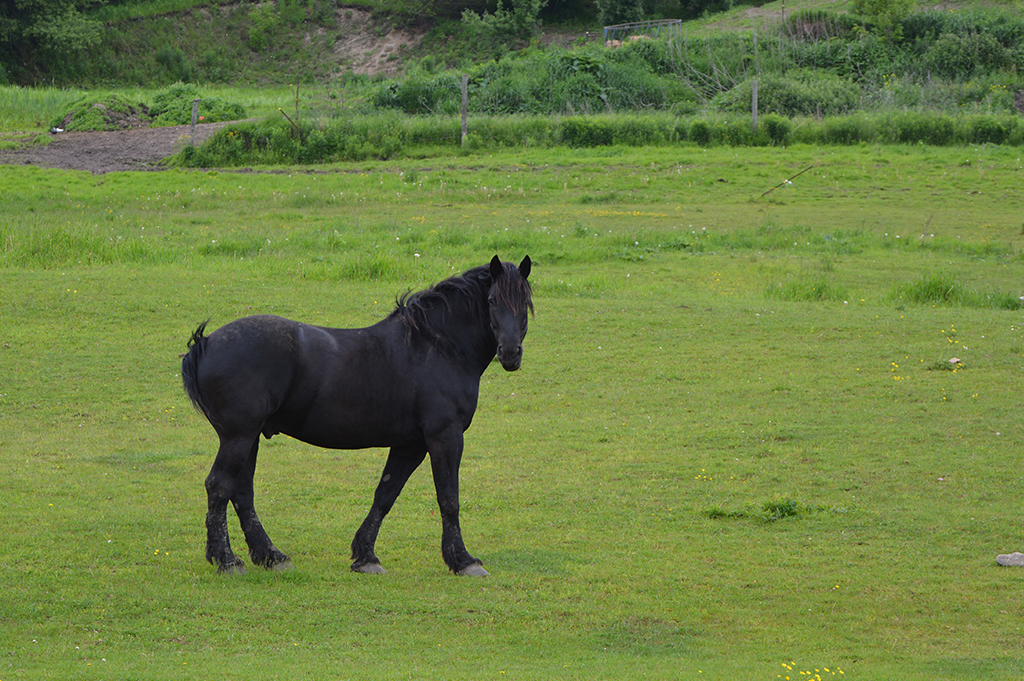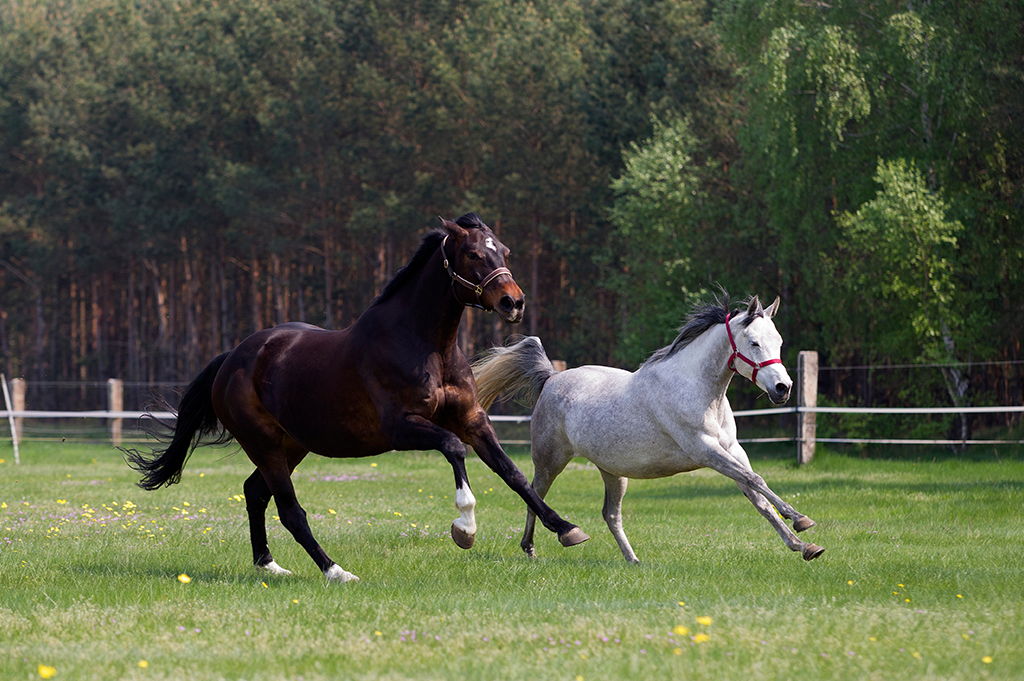When choosing a yard to keep your horse, it’s important to consider biosecurity; as it can be an important step in minimising the spread of infectious disease. The importance of yard biosecurity has been highlighted in the past few years, particularly with last year’s outbreak of equine influenza and, more recently, equine herpesvirus outbreak. We’ve spoken to our horse health expert about the importance of yard biosecurity and the measures you can take to keep your horse healthy.
What is yard biosecurity?

Biosecurity encompasses the different measures and protocols that a yard has in place to prevent and control the spread of disease within horses. Highly infectious diseases, such as strangles, have the potential to spready quickly between groups. It’s important to note that not all disease carriers have symptoms. Some horses will carry strangles and shed the bacteria for months or years, so strict biosecurity measures are essential, even for seemingly healthy horses. These diseases can be spread in a number of ways:
– Via direct contact
– Airborne Spread
– Fomites (objects that carry disease like water buckets, brushes, rugs, tack and equipment)
– Other animals, including people, cats and birds.
Choosing a livery yard

When it comes to choosing a livery yard for your horse, you’ll want to ask the yard manager what biosecurity measures are in place.
Assessing risks on your livery yard
Biosecurity measures should be assessed for each individual yard, as different locations will pose different risks. This can vary between yard types, the size of yard, the type and age of the horses.
Travel and new arrivals on your yard
Another risk factor to consider is how often horses travel for competitions, as well as the frequency of new arrivals. Yards which regularly buy and sell horses pose a greater risk, because of the number of horses coming and going.
Quarantine and isolation areas
It is generally recommended for livery yards to have a quarantine or isolation facility for any new arrivals. Any new horses arriving to the yard should be quarantined for a minimum of 21 days and be fully vaccinated.
Checks and vaccinations
For some types of yard, a blood test should be carried out after 14 days of a horse arriving to check for strangles, while the horse is quarantined. Horses that have been imported should also have additional tests for equine infectious anaemia, contagious equine metritis and equine viral arteritis. Your yard should have a strict worm control programme and vaccination policy in place for equine influenza, tetanus and, where appropriate, equine herpesvirus.
Livery yard visitor policy
Your yard should have one main entrance and exit, as well as visitor parking away from the main stabling area. Some visitors may need to access the yard for professional services, such as farriers and vets, but you might have to notify the yard manager before they visit.
Some yards may have a limit on the number of visitors, or the times at which they are allowed on site. Visitors should also follow any specific rules and policies set out by your yard. We’d always recommend checking your yard’s visitor policies before inviting any anyone, whether personal or professional.
Precautions to take as a horse owner

As a horse owner, there are precautions you’ll need to take when keeping your horse on a livery yard, both for the wellbeing of your own equine friend, as well as other horses on the yard.
Monitoring your horse’s health
If you keep horses, you should know about common infectious diseases, such as strangles, equine influenza and equine herpesvirus. It is recommended to monitor any changes in your horse’s health and if you suspect they are unwell, isolate them, inform your vet and other horse owners at the livery yard.
Keep your own equipment
Each horse owner on the yard should have their own tack and equipment, and it’s best practice to clean these on a regular basis. Horse owners also need to make sure they wash their hands and clean boots between handling different horses, to help minimise the risk of spreading disease.
Travelling with your horse
When travelling to shows or competitions, you should avoid sharing transport with horses from other yards. Similarly, when attending events, avoid contact with horses whose health condition is unknown, and avoid nose-to-nose contact with any horses. Equipment, including the horse lorry or trailer, should be cleaned and disinfected after shows where possible. And horses which have been stabled away might need to be placed in isolation for several days when returning to their usual livery yard.
We hope this guidance can help you and your horse enjoy many magical adventures together, both on and off your livery yard! If you’re concerned about your equine friend becoming unwell, you might want to think about taking out insurance for your horse. At The Insurance Emporium, our Pick ‘n’ Mix Horse Insurance allows you to select from a range of Optional Benefits like cover for Vet’s Fees. You could even receive up to 30% discount^! Trot on down to The Insurance Emporium to find out more.
The 30% discount is made up of 20% Introductory Discount plus 10% Multi-horse Discount (if appropriate). The Introductory Discount is available for the first 12 premium payments on lunar and calendar monthly policies or one premium payment on annual policies.
All content provided on this blog is for informational purposes only. We make no representations as to the accuracy or completeness of any information on this site or found by following any link on this site. We will not be liable for any errors or omissions in this information nor for the availability of this information. We will not be liable for any loss, injury or damage arising from the display or use of this information. This policy is subject to change at any time.


